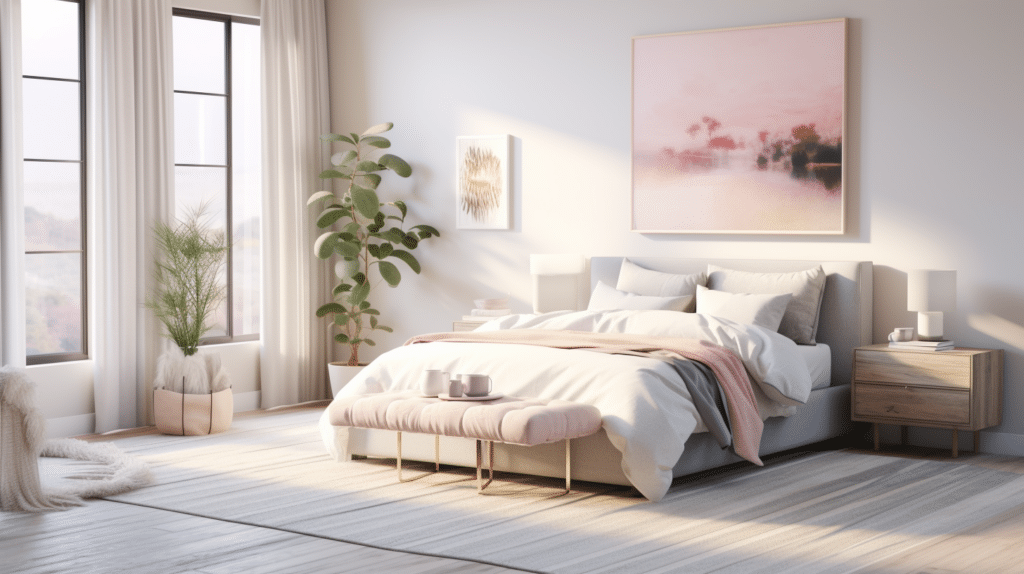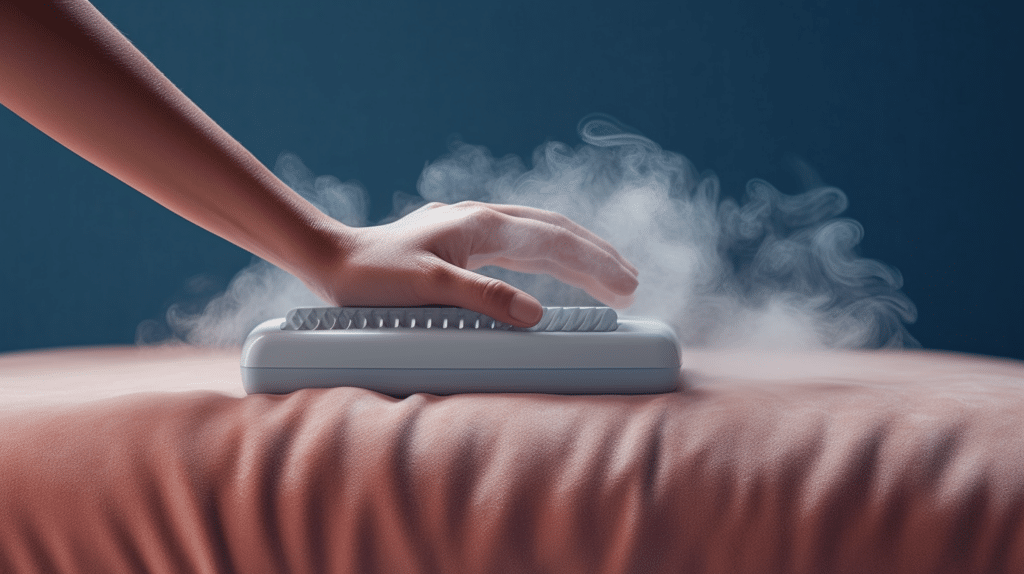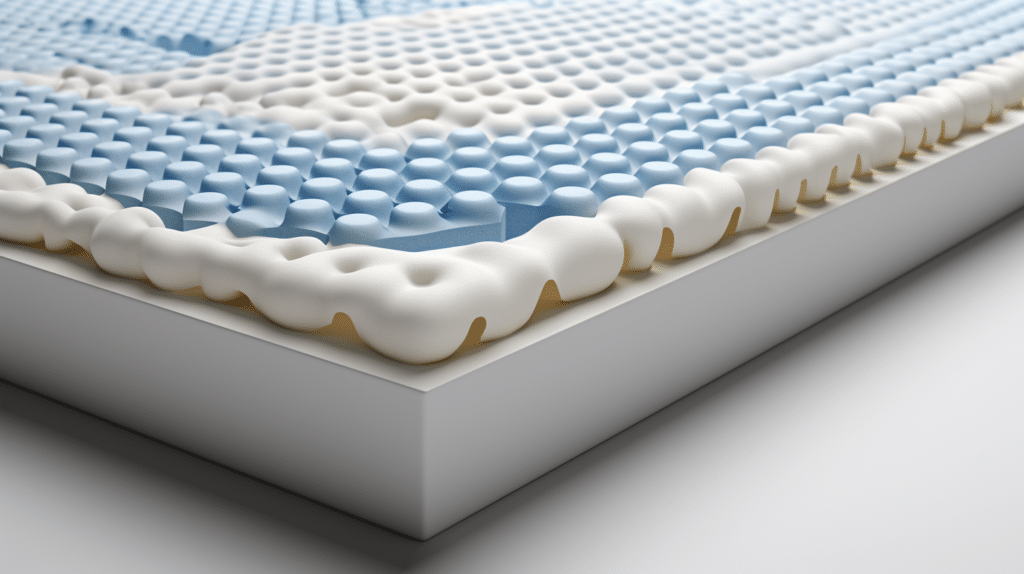Are you tired of waking up hot and sweaty in the middle of the night? The key to achieving a comfortable sleep lies in understanding the importance of breathability. In this article, we will delve into the science behind proper airflow, explore the benefits of breathable bedding and sleepwear, and provide tips for creating a breathable sleep environment. Discover how breathability can greatly enhance your sleep quality and help you wake up refreshed and revitalized.
The Importance of Proper Airflow in Sleep Comfort
Proper airflow is crucial for ensuring a comfortable sleep experience. Understanding the impact of airflow on sleep comfort can help you create an optimal sleeping environment. When air circulates effectively, it prevents the accumulation of heat and moisture, creating a cool and dry sleeping surface. This not only keeps you comfortable throughout the night but also helps regulate your body temperature, allowing for a more restful sleep. Additionally, good airflow promotes better air quality by reducing the concentration of allergens and pollutants in your bedroom. It also aids in preventing the growth of mold or mildew, which can negatively affect your health. By prioritizing airflow in your bedding and bedroom setup, you can enjoy the benefits of improved sleep quality and wake up feeling refreshed and rejuvenated each morning.
Understanding the Science Behind Breathability
To truly understand how breathability affects your sleep experience, it’s important to delve into the scientific aspects behind it. Breathability plays a crucial role in maintaining optimal body temperature regulation during sleep. When you sleep, your body naturally cools down, and proper airflow helps dissipate this heat, preventing overheating and excessive sweating. This is especially important for those who tend to feel hot while sleeping or live in warmer climates.
Moreover, breathability has a significant impact on sleep hygiene. When there is sufficient airflow through your bedding and mattress, it prevents the buildup of moisture and dust mites. This reduces the risk of allergens and irritants that can disrupt your sleep or cause respiratory issues.
In summary:
- Breathability regulates body temperature during sleep.
- It prevents overheating and excessive sweating.
- Proper airflow enhances sleep hygiene by reducing allergens and irritants.
Benefits of Breathable Bedding
You can experience improved air circulation and temperature regulation with breathable bedding. By using bedding that allows air to flow freely, you can enjoy a more comfortable sleep environment. Breathable bedding has several benefits that contribute to better sleep quality. Firstly, it helps in regulating body temperature by allowing excess heat to escape and preventing overheating during hot nights. This ensures that you stay cool and sweat-free throughout the night. Secondly, breathable bedding promotes better air circulation in the bedroom, reducing the buildup of allergens such as dust mites and mold spores. This is especially beneficial for individuals with allergies or respiratory conditions. Lastly, breathable bedding can also enhance overall comfort by providing a softer and more luxurious feel against your skin. So investing in breathable bedding not only improves air circulation but also contributes to a more restful and comfortable sleep experience.
Choosing Breathable Fabrics for Sleepwear
When selecting sleepwear, it’s important to opt for fabrics that allow air to flow freely, ensuring a comfortable and restful night’s sleep. Breathable fabric benefits are numerous, as they help regulate body temperature and prevent overheating during sleep. Here are some breathable sleepwear options to consider:
- Cotton: This natural fabric is lightweight and highly breathable, allowing air to circulate around your body.
- Bamboo: Known for its softness and moisture-wicking properties, bamboo fabric keeps you cool and dry throughout the night.
- Linen: With its loose weave and natural fibers, linen allows maximum airflow, keeping you cool in hot weather.
By choosing sleepwear made from breathable fabrics like cotton, bamboo or linen, you can enhance your comfort levels while sleeping. These materials promote breathability by allowing air to pass through easily, preventing sweat buildup and ensuring a more enjoyable slumber.
Creating a Breathable Sleep Environment
When creating a breathable sleep environment, there are a few key points to keep in mind. First, make sure you choose a proper mattress that allows for airflow and ventilation. Secondly, using breathable pillowcases and sheets can help regulate your body temperature throughout the night. Lastly, consider investing in bedding materials made from natural fibers like cotton or bamboo, which are known for their breathability properties.
Proper Mattress Selection
To ensure a comfortable sleep, it’s important to select a mattress that allows for breathability. When choosing a mattress, consider the level of firmness that suits your preference. A medium-firm mattress provides a balance between support and comfort, allowing for better airflow and breathability. Additionally, look for a mattress that offers proper support to maintain spinal alignment throughout the night. This will help prevent discomfort and promote healthy sleep posture. Consider mattresses with individually wrapped coils or memory foam layers, as they can provide targeted support while still allowing air circulation. Lastly, opt for a mattress with breathable materials such as natural latex or cooling gel-infused foam to regulate body temperature during sleep. Remember, finding the right combination of mattress firmness and support is essential for a comfortable and breathable sleep environment.
Using Breathable Pillowcases and Sheets
For a more comfortable and breathable sleep, make sure you use pillowcases and sheets that allow for air circulation. Choosing breathable bedding options can greatly enhance your sleep experience. Breathable pillowcases are made from materials like cotton or bamboo, which promote airflow and prevent heat buildup. This helps regulate your body temperature throughout the night, ensuring a cool and refreshing sleep. The benefits of breathable pillowcases go beyond temperature control. They also help wick away moisture, keeping you dry and preventing the growth of bacteria or mold. Additionally, these pillowcases are soft and gentle on your skin, reducing the risk of irritation or allergies. When paired with breathable sheets, you create an optimal sleeping environment that promotes relaxation and rejuvenation. So invest in high-quality breathable bedding for a truly restful night’s sleep.
Improving Air Circulation in the Bedroom
Improve air circulation in your bedroom by using a fan or opening a window. These simple actions can make a significant difference in the quality of your sleep. By improving ventilation, you allow fresh air to flow into the room and remove stale air, creating a more comfortable environment. Not only does this help regulate temperature, but it also aids in air quality control. Stagnant air can lead to increased humidity levels and the accumulation of allergens such as dust mites and pet dander, which can disrupt your sleep and trigger allergies. Proper airflow promotes better respiratory health, reducing the risk of congestion or breathing difficulties during the night. So remember, when it comes to achieving optimal sleep comfort, don’t underestimate the importance of improving air circulation in your bedroom.
Breathability and Sleep Disorders
Proper airflow in the bedroom is crucial for those with sleep disorders. When it comes to breathability, individuals with sleep apnea can greatly benefit from a well-ventilated room. The ability to breathe easily during sleep is essential for managing this condition, as it helps reduce the frequency of interruptions in breathing. Similarly, people who struggle with insomnia can find relief by ensuring good air circulation in their sleeping environment. A stuffy or stagnant atmosphere can increase discomfort and make it harder to fall asleep or stay asleep throughout the night. To enhance breathability in your bedroom, consider these three tips:
- Open windows or use a fan to promote fresh air circulation.
- Invest in breathable bedding materials that allow air to pass through.
- Keep your bedroom clean and free from dust and allergens that could impact breathing.
By prioritizing breathability, you can create an optimal sleeping environment for better management of sleep disorders like sleep apnea and insomnia.
The Link Between Breathability and Sleep Quality
To enhance the quality of your sleep, it’s important to understand the connection between breathability and how well you rest at night. Poor breathability can have negative effects on sleep quality, leading to a restless night and increased disturbances. When your sleeping environment lacks proper breathability, it can cause discomfort and make it difficult for your body to regulate its temperature. This can lead to sweating and feeling too hot or too cold, which can disrupt your sleep cycle. Additionally, poor breathability can also result in trapped moisture and an increase in allergens like dust mites or mold, further causing sleep disturbances. On the other hand, when your bedding materials are breathable, they allow air to circulate freely and wick away moisture from your body, helping you maintain a comfortable temperature throughout the night and reducing sleep disturbances. So next time you’re choosing bedding materials or mattress covers, consider their breathability for a better night’s rest.
Tips for Enhancing Breathability in Your Sleep Routine
Make sure you prioritize breathability in your sleep routine by considering the materials of your bedding and mattress covers. Enhancing ventilation is key to creating a comfortable sleep environment. Here are three tips to help you enhance breathability:
- Choose natural fibers like cotton or linen for your sheets and pillowcases. These materials are breathable and allow air to circulate, keeping you cool throughout the night.
- Opt for a mattress with good airflow properties. Look for one with built-in ventilation channels or choose a mattress topper that promotes air circulation.
- Practice deep breathing techniques before bed. This can help relax your body and open up your airways, allowing for better oxygen flow while you sleep.
By incorporating these tips into your sleep routine, you can ensure optimal breathability and enjoy a more restful night’s sleep.
Conclusion
When it comes to achieving a restful night’s sleep, embracing breathability is key. Proper airflow and breathable fabrics play a vital role in enhancing sleep comfort. By choosing bedding and sleepwear made from breathable materials, you can create an environment that promotes optimal ventilation. This not only helps prevent overheating but also improves air quality while you sleep. So, if you want to improve your sleep quality and wake up feeling refreshed, make sure to prioritize breathability in your sleep routine.


